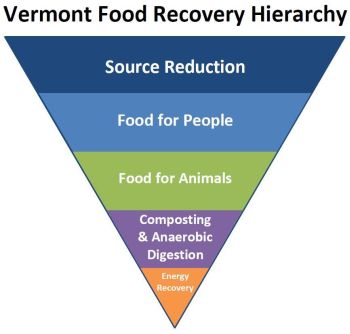In 2012, the Vermont Legislature unanimously passed Act 148, a universal recycling and composting law that offers Vermonters a new set of systems and tools for keeping as much as possible out of the landfill. The first thing the Legislature did was jettison the concept of waste itself.
Our “waste” stream is composed largely of recoverable resources. With so many options for recovering and reusing recycled materials, and with landfill space steadily shrinking, the State of Vermont has determined that the best tool for keeping as much as possible out of the waste stream is a materials management system, where valuable resources that we are currently burying in landfills are instead collected and marketed as commodities. To achieve this, the current system needed to be upgraded. Act 148 is a giant step in that direction.
Why do we need a universal recycling law?
Much of what could be recycled or composted is still ending up in the landfill. Over the past 25 years, three things have happened:
- The overall amount of material that Vermonters have been sending to the landfill has increased.
- Landfill capacity has decreased.
- Markets for recyclables and compostables have expanded, enabling us to redefine those materials as resources rather than as waste.
Act 148 is designed to encourage the development of infrastructure and systems that will enable everyone in Vermont to keep reusable resources out of the landfill and make progress in energy and resource conservation.
Tools and systems will be designed as much as possible based on the following assumptions:
-
- Convenience – If it’s not convenient, recycling rates plummet. The law includes service and infrastructure requirements that offer more recycling opportunities to the public.
- Incentives – When everyone pays the real cost for the amount they choose to throw in the landfill, it is more likely that they will participate in reducing their waste and recycling what’s left.
- Mandates – Requirements for universal participation for keeping yard debris, food scraps, and recyclables out of the landfill will increase participation in recycling and composting.
A few facts:
- In 1987, Vermonters threw an average of 3.15 pounds per person per day into the landfill. By 2011, it increased to 3.62. In Chittenden County, that figure was 3.08 pounds in 2012.
- In 2009, about 58,000 tons of recyclables with a value of $131 per ton were landfilled in Vermont. That adds up to about $7.5 million worth of material.
- Components of Act 148, such as organics collection, mandatory recycling, and financial incentives to separate resources from trash, will help Vermont approach higher recovery rates that similar programs in the U.S. have achieved
- Each ton of material recycled saves about 2.92 metric tons of carbon dioxide (CO2). If we can capture just 50 percent of the recyclables now going to the landfill in Vermont (or 29,000 tons per year), then we could eliminate upwards of 85,000 metric tons of CO2 per year, the equivalent of taking 17,708 cars off the road. (4.8 metric tons/year/vehicle, according to the EPA.)
What the Universal Recycling Law includes
Bans on the disposal of certain materials
Landfill bans will be phased in through the year 2020 (see timeline below). For example, in 2015, all mandatory recyclables were banned from the landfill throughout Vermont. This is already in effect in Chittenden County.
Also in 2014, businesses generating over 104 tons of food scraps per year were required to send those scraps to a donation program, a farmer for livestock feed, and/or a composting facility. In 2015 that ceiling dropped to include those who generate more than 52 tons per year, and so on. By 2020, food scraps from all businesses and residents will be banned from the landfill.
Collection requirements for transfer stations, drop-off centers, and other facilities permitted to accept trash
All such facilities were required to accept mandatory recyclables and divert them from the landfill by 2014, leaf and yard debris by 2015, and food scraps by 2017.
Certain conditions will allow exemptions from this requirement.
A hierarchy for managing food scraps and yard debris
Similar to the U.S. Environmental Protection Agency’s hierarchy, the universal recycling and composting law encourages businesses and residents to prioritize their diversion practices based on the following hierarchy:
- Reduction at the source. Encourage smarter food acquisition and use to reduce waste.
- Diversion of consumable food for people. Manage leftovers so they can be donated to food shelters.
- Diversion for agricultural uses, including for animals, composting, nutrient management, digestion, and energy recovery.
Phased in over time, starting with largest generators, the above diversion hierarchy will apply to all Vermonters in 2020. See timeline below for specific phases.
Requirements for municipalities to implement variable rate pricing for landfill material generated by residential customers
Also known as “Pay-As-You-Throw” (PAYT), variable rate pricing has proven to be a successful incentive for reducing the amount of recyclables that end up in the trash can.
Variable pricing is based on volume or weight and more accurately pegs pricing to the actual amount of trash collected from a household. This results in those who produce more waste shouldering their true share of the cost of managing that waste. At the same time, those who generate less trash (through reducing consumption, reusing, recycling, or composting) pay proportionately less.
Requirement for recycling containers to be provided in publicly owned spaces
Wherever trash cans are provided (except bathrooms), the universal recycling and composting law requires that recycling containers also be provided in state and municipally owned spaces.
What does the universal recycling law mean for households?
Initially, not a lot if you are a resident of Chittenden County, because the Chittenden Solid Waste District already has landfill bans on a number of materials, including the state’s newly designated mandatory recyclables, as well as yard and garden debris; and requires haulers to provide recycling pickup at households subscribing to curbside trash pickup.
- In 2015, haulers offering curbside trash pickup were required to adopt a variable rate pricing structure, also known as “Pay-As-You-Throw,” to more accurately peg pricing to the actual amount of trash collected from a household.
- In 2016, the clean wood ban went into effect for everyone, which forbids land-filling any wood that has never been painted, stained, treated, or glued.
- In 2020, food scraps will be banned from the landfill entirely.
